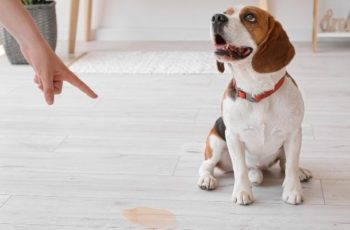Puppies are like toddlers—curious, cute, and always trying to sneak into your bed at the crack of dawn. Another trait they share with little ones is the need for social interaction and companionship from an early age.
But what does the socialization of a puppy involve, exactly? Are you sure you know? According to pet expert Katrina Warren, humans might be getting it wrong most of the time. These are the most important takes from the interview:
DO: know what puppy socialization is
Socialization is the process in which puppies create positive associations with all the new things happening around them: humans, nature, sounds, activities, smells, other pets, and so on.
Socialization is NOT just taking your dog to the park (even though many people think that’s what it’s about!). Yes, getting the puppy to interact with other puppies and enjoy the fresh air is part of it—but a small part.
Everything feels new in a dog’s developmental period. But new things can be scary if they’re not introduced carefully and safely into the puppy’s life and routine: that’s what socialization is for.
DON’T: Wait too long
Socialization takes place in the first stages of the puppy’s life. You can start as soon as the puppy is born, but the critical period is between three and 18 weeks of age. It is during this crucial time that you should try to expose the puppy to as many new experiences as possible—and not later.
So, whether they will be comfortable with certain things in their adult life often depends on these experiences being appropriately introduced early enough. You should start socialization while the puppy is still a puppy, and not in its adult life.
‘If a puppy hasn’t seen a postman and then suddenly sees them as an adult, they’re way more likely to be fearful of them’, says the expert.

DO: Start at home
Socialization starts at home! Little things like petting and touching in a safe environment will get them used to contact and interactions.
It can be as simple as waiting for them to sit next to you when watching TV, and then playing with their ears gently. Don’t forget to offer treats every time to create positive reinforcement.
Inviting people over is also good for the puppy’s social life (and yours too, right?). So have some friends over for dinner and allow your dog to come closer in their own time, without pressure.
Here are a few things you can introduce to your dog at home, preparing them for the real world:
- Sounds: washing machine, vacuum cleaner, hair dryer, music.
- Objects and obstacles: mirrors, bags and packaging, TVs and devices, water, slippery floors.
- Textures: grass, concrete, carpets, sand.
- All types of people: from children and babies to people wearing “strange” objects like hats or glasses.
DON’T: Force them to socialize
Whether at home or outside, interaction should never be forced. Never push them into any situation if they appear nervous or fearful.
If you try something at home and they seem uncomfortable, let it go immediately. You can start again later.
This can be more difficult when you are outside. Sometimes there will be people or children really enthusiastic to hold or play with your puppy (which is natural because they’re so cute!) but then again, if your dog seems uncomfortable, kindly help create the space they need to feel safe.
If they get too nervous, take a step back until they look calm again, and then reward them with a great treat to reinforce their calmness.
DO: Keep it short
Puppies have a short attention span. Doctor Warren recommends keeping the socialization sessions to 5-10 minutes at a time.
If you extend your training and socialization sessions for too long, it’s likely that your little friend will become exhausted and overwhelmed; with the risk of developing negative feelings, which is the opposite of what we want.
DO: Try these things
Here are more ideas to socialize your puppy in the best way possible:
- Get them in contact with a lot of different people, of all ages, genders, and appearances. The more diverse, the better! This includes different accents, different clothes, and different accessories (hats, glasses, etc).
- Touch their ears and feet. It’s important they’re comfortable being touched and groomed (especially with breeds like the poodle or the Maltese, which will need to be professionally groomed quite often).
- Expose them early to the challenges of daily life: cars, skateboards, medical examinations, etc.
- Take your puppy on short walks, for example, to the store, to the park, or to your favorite café.
- Give them treats and rewards. This is the best way for them to associate these things, people, and activities with a positive feeling.
Why is it important to socialize a puppy?
If puppies are not exposed to new situations in their development stage, it’s likely they will fear these situations permanently when exposed to them later in their adult life. According to certified dog trainer Jacqui Foster: ‘Absence of one bad experience far outweighs 100 good experiences!’
A social puppy means a healthy, happy, smart pet. By starting socialization early, you’ll help them build confidence, trust and connection with the rest of the world.
The post The do’s and don’ts of socializing a puppy. appeared first on Sidewalk Dog.

